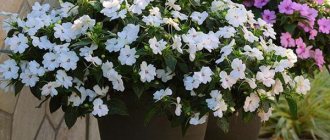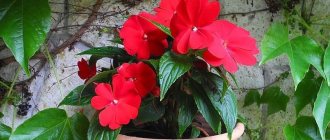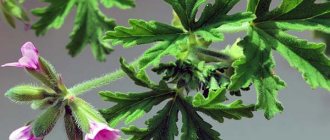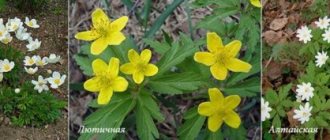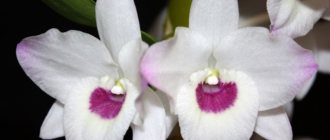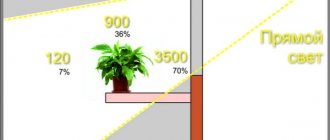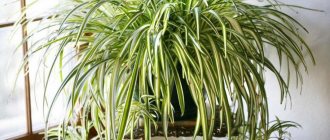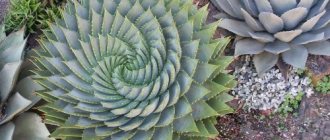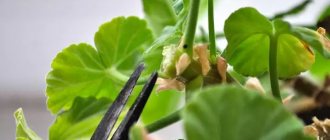Touch-me-not, evergreen, light, Vanka wet flower - all these are names for one plant, which is quite often found in our apartments.
The homeland of this pretty flower is tropical Asia and Africa. It is one of the most unpretentious and easy plants to grow at home. Ogonek takes root easily, grows quickly and looks very impressive during flowering: its compact bushes, strewn with bright flowers, can decorate any room. The Vanka wet flower also has another name - balsam. With good care, it can bloom almost all year round, and providing it with favorable conditions is not difficult.
Even a novice gardener can easily cope with growing this plant. It is perennial, but due to its rapid growth, the shoots usually become elongated, the bush becomes spreading and quite soon loses its compact shape. Therefore, balsam lovers often take cuttings from old plants in the spring, growing new bushes.
Impatiens bloom better if planted in a slightly cramped pot or container. A plant in a pot that is too spacious will not bloom lushly.
Features of the plant
The tropical and subtropical territories of Asian and African countries are considered its native places, but it is also found in Central Asia. Very popular among those who love to grow house plants for the past four hundred years.
Vanka wet reproduces easily. It blooms all year round in different shades - from white to orange. And hybrids are generally unique.
Flower names
Balsam has many names. Vanka - Ivan - is the most common male name on the territory of the Russian Empire, and balsams populated the window sills of the houses of not only the nobility, but also ordinary people. And they, in turn, paid attention to how the plant behaved in inclement weather or after heavy watering. As it turned out, on the sharp tips of the serrated green leaves, droplets of water are released through special holes (scientists called this process “guttation”) - therefore, the second part of the Russian name is “wet”. The name balsam is also “light”, because in the foliage of rich green flowers its flowers - of different shades - “burn” in any weather: 6-8 months a year. And almost everywhere it is called “impatiens”, in fact, by the Latin name of the genus Impatiens. But even without the intervention of science, another amazing feature was clearly visible - the balsam fruit, the capsule bursts even with the lightest touch, shoots out rather large seeds and curls its flaps inward - here you have a “touch-me-not”!
Home care
Balsam is good because it is not capricious. So even a novice gardener can grow it. But there are still a number of conditions necessary for the beauty, splendor and good flowering of the bush.
Location and lighting
Everbloom develops throughout the year, without a specific dormant period. In order for it to bloom well, it will need a lot of light. But in the summer it is still better to use eastern and western window sills. If the pot is on a south window, be sure to shade your pet. In winter, when daylight hours are too short, use special lamps to extend this period to 12-13 hours. Then you are guaranteed to admire flowers.
Temperature
The degree of environmental warmth is not particularly important for balsam. The optimal mode is from 15°C to 30°C. There should be constant fresh air in the room. Protect impatiens from drafts.
In winter, cardboard or polystyrene foam should be placed under the pots on the windowsills for warmth. Make sure that the thermometer does not fall below +12 degrees.
Watering
There are several ways to water a wet Vanka:
Upper
Soil under the flower until the entire lump is wet. After some time, drain excess moisture from the pan.
Lower
After pouring water into the pan, you must wait until the moisture is absorbed into the soil. Remove excess liquid.
Wick
It is used by flower lovers who are away from home for a long time - on a long business trip, on vacation.
It's not difficult to make. To do this you will need a piece of clothesline. Pass it through the drainage hole of the pot. Fill the flowerpot 1/3 with soil. Lay the twine in a spiral. Lower the flower. Fill with soil mixture to the required level.
Initially, you need to water your pet using the overhead method, then place it over a container of water. Moisture will flow inside through the cord, moistening the entire soil. Fertilizers can be added to the wick watering liquid in a very small dose.
Air humidity
At low temperatures of 15-20°C, balsam does not need air humidification. On the contrary, excess moisture can lead to diseases. But at 20-25°C you will have to moisturize. At 30°C, such a measure is mandatory.
Use a regular spray bottle. It must be remembered that it is undesirable to leave droplets of water on flowers and leaves. When exposed to direct sunlight, spots form in these places, spoiling the appearance.
The best time for the procedure is morning or evening. You can use a special humidifier, which creates a favorable microclimate. The method, of course, is expensive, but it is useful not only for flowers, but also for humans.
The soil
You can plant balsam in commercially available soil: such as “rose”, “violet”. It is considered ready for use, but must be loosened before replanting. For this purpose, washed river sand or perlite is suitable. By adding one of these ingredients, the soil will become loose and airy.
You can prepare the soil mixture yourself with the following composition:
- 25% perlite or sand;
- 75% soil.
Feeding and fertilizers
Impatiens can be fed with any fertilizer for flowering plants. The only exceptions are decorative deciduous ones. They can be different in form:
- in the form of tablets;
- rods.
It doesn't really matter. You need to bury them in the ground; when watered, they will gradually release the required amount of microelements into the soil.
Liquid ones are also used. They need to be fed after watering. Only the next day, otherwise the roots may get burned.
With natural light in the autumn, fertilizing can be reduced. In winter, stop altogether. And return to fertilizers starting in spring. When illuminating in cold weather, exclude feeding for a month or two, giving the impatiens a rest. There is no need for fertilizing after transplantation for 1-2 weeks. Some gardeners do not fertilize the bush at all. At the same time, it is replanted every year in fresh soil.
Transfer
The flower tends to grow and increase the volume of the root system. When the roots become crowded, replanting is required. If possible, you need to wait until spring. The procedure can be carried out by completely replacing the soil or by transshipment.
In the first case, it is necessary to remove all the soil from the roots. You cannot wash them, otherwise the hairs will be washed off and the patient will be sick for a long time. It might even disappear altogether.
When the second time is wet, Vanka is carefully removed from the pot, leaving the soil mixture behind. Place in a larger pot, filling it with additional soil. Do not replant immediately into a container that is too large. The size should increase gradually.
Trimming
The best time for this is spring, when young shoots appear. Pruning prevents the flower from growing larger and makes it look neater. The procedure can be performed up to 1/2 the size of the bush. The material obtained in the process is used for reproduction.
How to form a crown
To obtain a beautiful shape, the top young shoots are removed by pinching. The flower stops growing upward. At the same time, side shoots begin to develop intensively. It is necessary to regularly turn it towards the light to avoid one-sidedness. If there is artificial lighting, then this is not required, because the light source is from above, and the pet will be drawn to it evenly.
Garden balsam
Unpretentious balsam - Vanka wet - is also used in decorative and home gardening. At the same time, plants of familiar indoor varieties are often used for landscaping and landscape design, planted in containers or open ground.
Along with the houseplant Vanka wet, an annual form called “garden balsam” is also used in landscape design. This plant spread from Eastern India, where it occurs wild. It has a lush, erect bush with succulent, fleshy shoots and green, jagged leaves.
The plant blooms long and profusely. The flowers of Vanka wet can be simple or double. They are distinguished by a wide palette of different shades. This heat-loving plant requires a well-lit place. Garden balsam is propagated by seeds.
Often, signs and superstitions are associated with the indoor flower Vanka wet. They say that it has a positive effect on creative people and helps create an atmosphere of harmony and harmony in the home. If peace and respect reign in the family, this flower will bloom magnificently and for a long time. Misunderstandings and disagreements between family members, on the contrary, can have a negative impact on the plant.
Vanka wet received its name because of this feature: droplets of juice often appear on its juicy green stems. Probably for the same reason, a superstition arose that because of the flower, family members may develop a penchant for alcohol.
How these facts are related to each other is unclear. And, of course, it’s up to everyone to believe in such signs or ignore them. But in favorable conditions and a sincere home atmosphere, balsam will bloom and become prettier day by day, delighting household members with the bright lights of its flowers.
Bloom
Impatiens flowers delight the eye with their diversity. They really resemble lights (popular name) of various colors: white, pink, orange, red, purple. They are even found with stripes or spots. After flowering, green boxes are formed. They gradually dry out and, if you touch them, burst, throwing seeds out and giving life to offspring.
Impact on humans
Multicolored Balsam
There is an opinion that the Ogonyok flower inspires a person, an unprecedented amount of mental strength appears, which pushes the owner of the flower to develop and move up the career ladder. The person himself does not understand what is happening to him, just at one fine moment he catches himself thinking that he has become more energetic and active.
Reproduction
New plants can be obtained in two ways: cuttings or seeds.
Cuttings
They need to be cut in spring or summer, when they reach about 10 centimeters. To do this, use clean scissors, a blade or a sharp knife. You can root the cuttings in the ground or in boiled water at room temperature.
If you use soil, you need to set up a greenhouse from a bag. When germinating in a container with water, small bottles are used (for medicines). When the first leaves appear, you know: the rooting process has been successful.
Seeds
Propagation material can be purchased or grown at home. The seeds need to be sown evenly into the substrate, watered, sprinkled with a thin layer of soil on top and moistened with a spray bottle.
It is advisable to make a greenhouse out of film. After the sprouts appear, the planting must be ventilated. When one or two pairs of leaves appear, you can start diving. After branching, transplant into separate pots.
How to water correctly?
Impatiens require fairly abundant watering. In the spring-summer period, the indoor plant should be watered every other day, preventing the soil from drying out. A deep pot tray will help ensure better and longer soil moisture. With insufficient watering, the succulent stems of the flower may lose their elasticity. In winter, watering should be done once every three days or twice a week, as the soil dries out.
The plant should not be overwatered; if moisture stagnates, small sciarid midges may appear. Water for irrigation is used either boiled or tap water, but first you need to let it sit for several days. You should spray your home flower only if the air temperature in the room exceeds 20-22°C; in other cases, it will be enough to just make sure that the soil in the pots does not dry out.
If balsam grows in open ground, then watering is carried out daily along with spraying. The advantage of such a system is the ability to prevent the appearance of pests, especially spider mites. Water the soil in a timely manner to prevent the soil from drying out and the flower buds falling off. It is also undesirable to overwater: the roots may rot. Watering is best done in the evening, after sunset. On a cool night, moisture does not evaporate and is well retained in the soil.
Diseases and pests
Like any plant, balsam can be plagued by troubles of the following kind:
| Diseases | Symptoms | Measures |
| Cucumber mosaic - a viral disease | The leaves become wavy, characteristic spots form on them, holes are possible | To be destroyed |
| Ring mosaic is a viral disease | Ring patterns on the leaves, they begin to crack. Growth is slowing down | Must be destroyed |
| Cucumber rot is a fungal disease | The color of the stem changes, it becomes brown | Treatment with Fitosporin |
| Downy mildew is a fungal disease | A whitish coating and spots appear on the leaves | Remove infected areas and treat with Alyet |
| Pests | Symptoms | Measures |
| Spider mite | Yellow specks on the leaves, the appearance of cobwebs | Regular shower with plain water. Preparations: “Actellik”, “Fitoverm”: gentle solution of chamomile or garlic 1/1 |
| Whitefly | The foliage changes shape and turns black | Apply: “Confidor”, “Aktelik”, “Mospilan” |
| Trips | The leaf changes color, shape changes, spots appear | Drugs: Intavir, Vertimek, Fitoverm |
| Aphid | The buds do not open, the leaves curl, the balsam withers | Apply: “Karbofos”, “Fitoverm”, “Kinmiks” |
| Shchitovka | Yellow or brown spots | Remove adult insects with a cotton swab soaked in soapy water and treat with an insecticide. |
| Poduras and fungus gnats | Earth fleas are dangerous for young shoots; they live in the ground | Mix the preparation “Grunt-2” into the soil |
Kinds
There are about five hundred types of balsam and they are divided into perennial and annual:
- annuals - combine those planted in flower beds;
- perennials - those that grow in pots on windows.
Common varieties of balsam in the European part are:
- Walerra's balsam;
- New Guinea;
- garden;
- street;
- festive;
- golden.
There is no need to list all types. The main thing is to decide on the goals and objectives of the design. And then the choice of variety for growing at home will come naturally.


